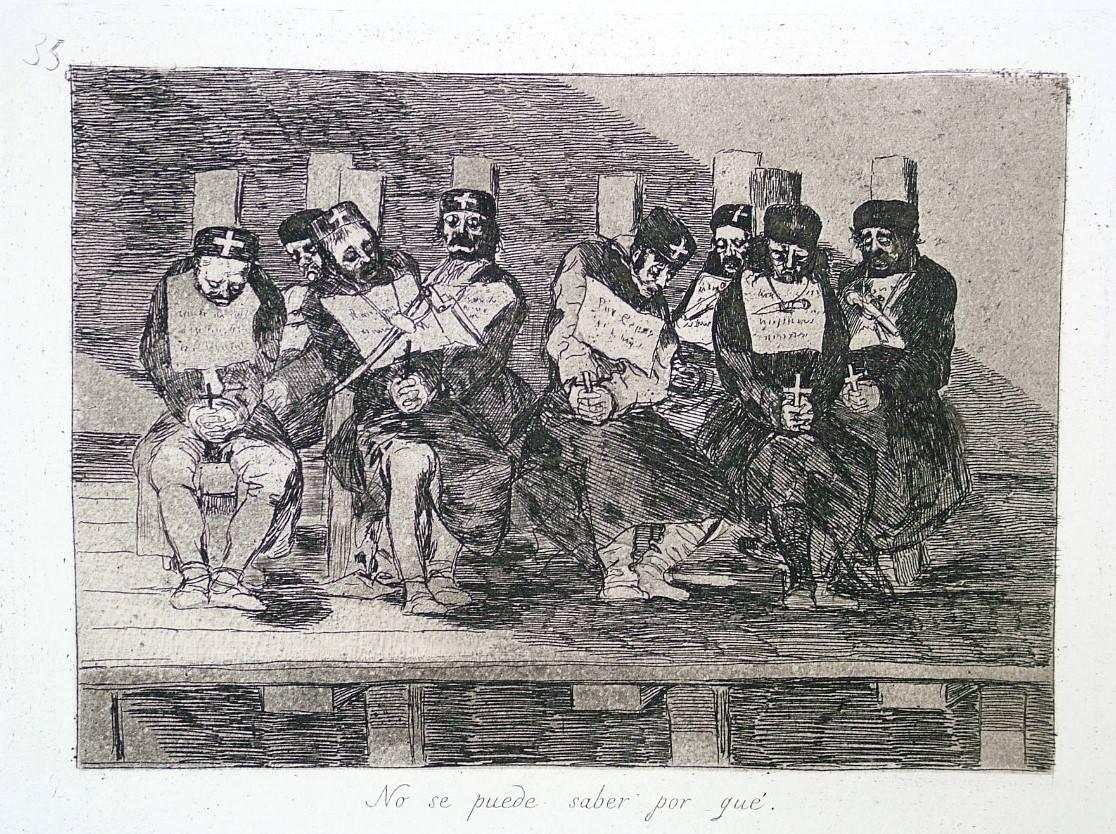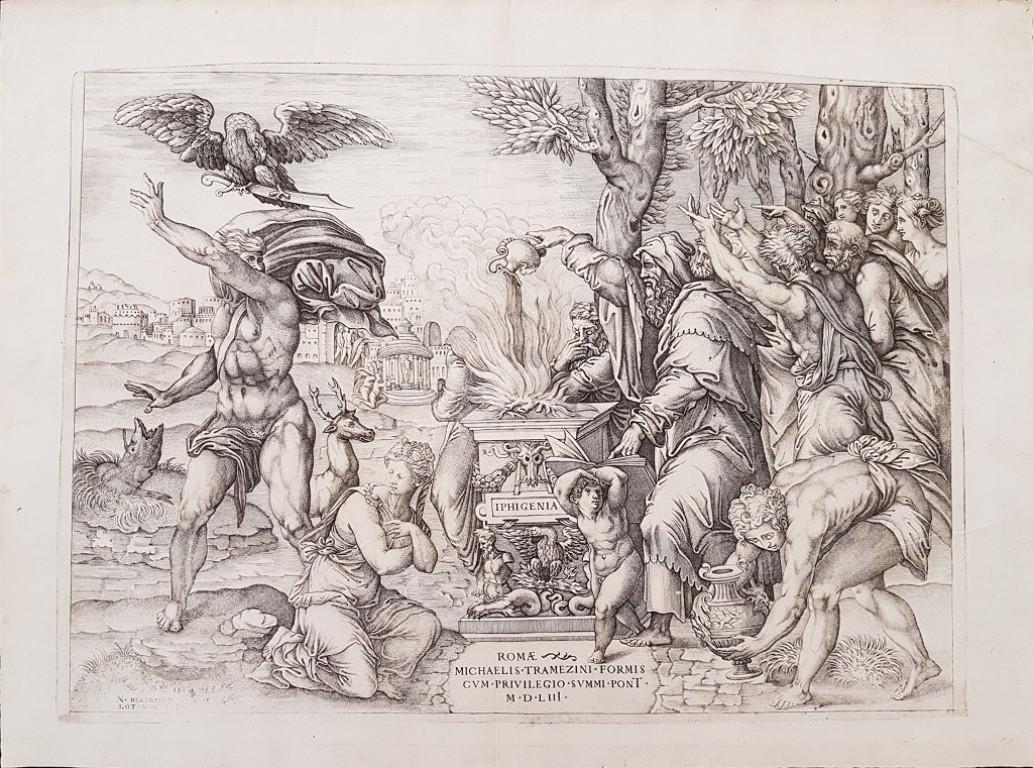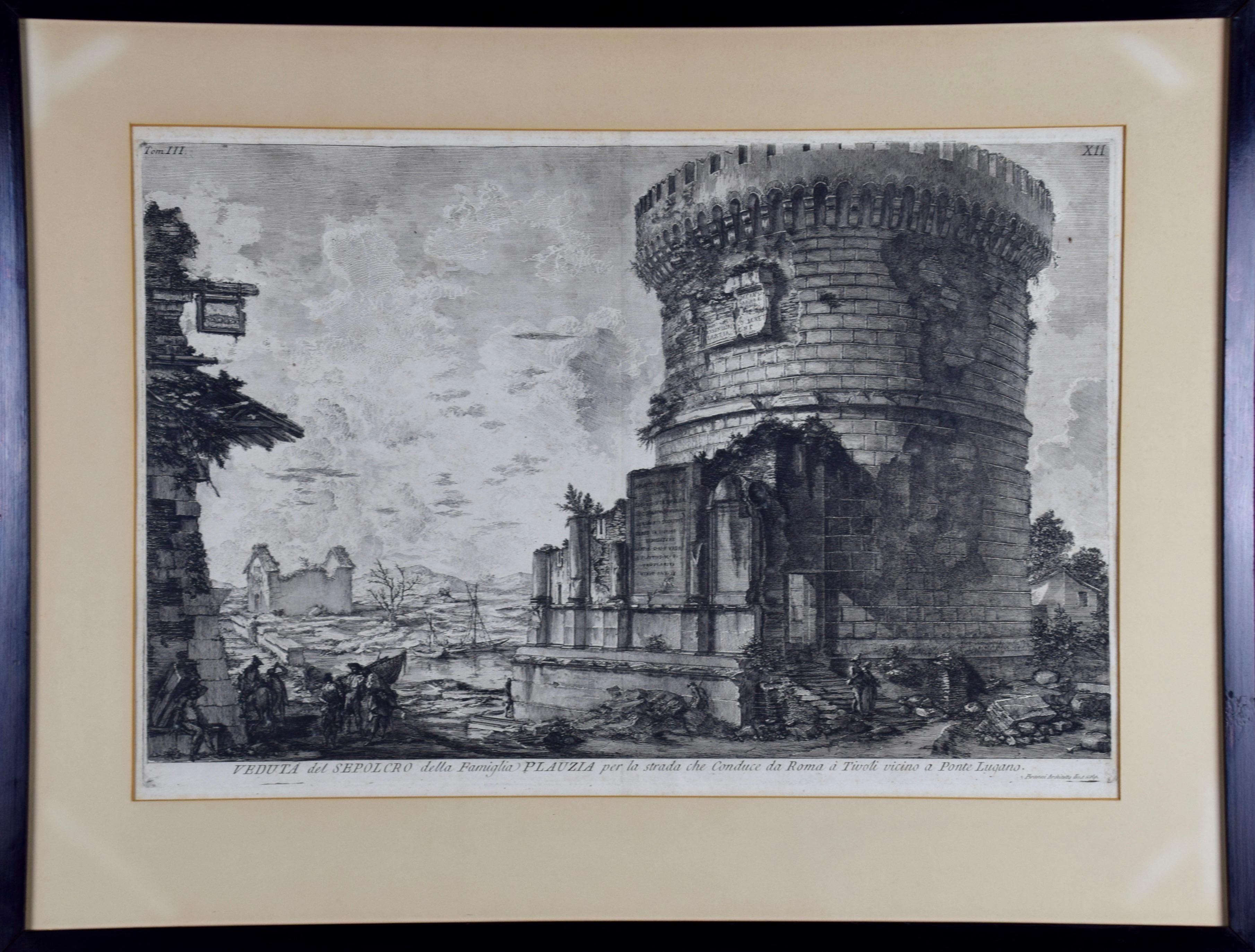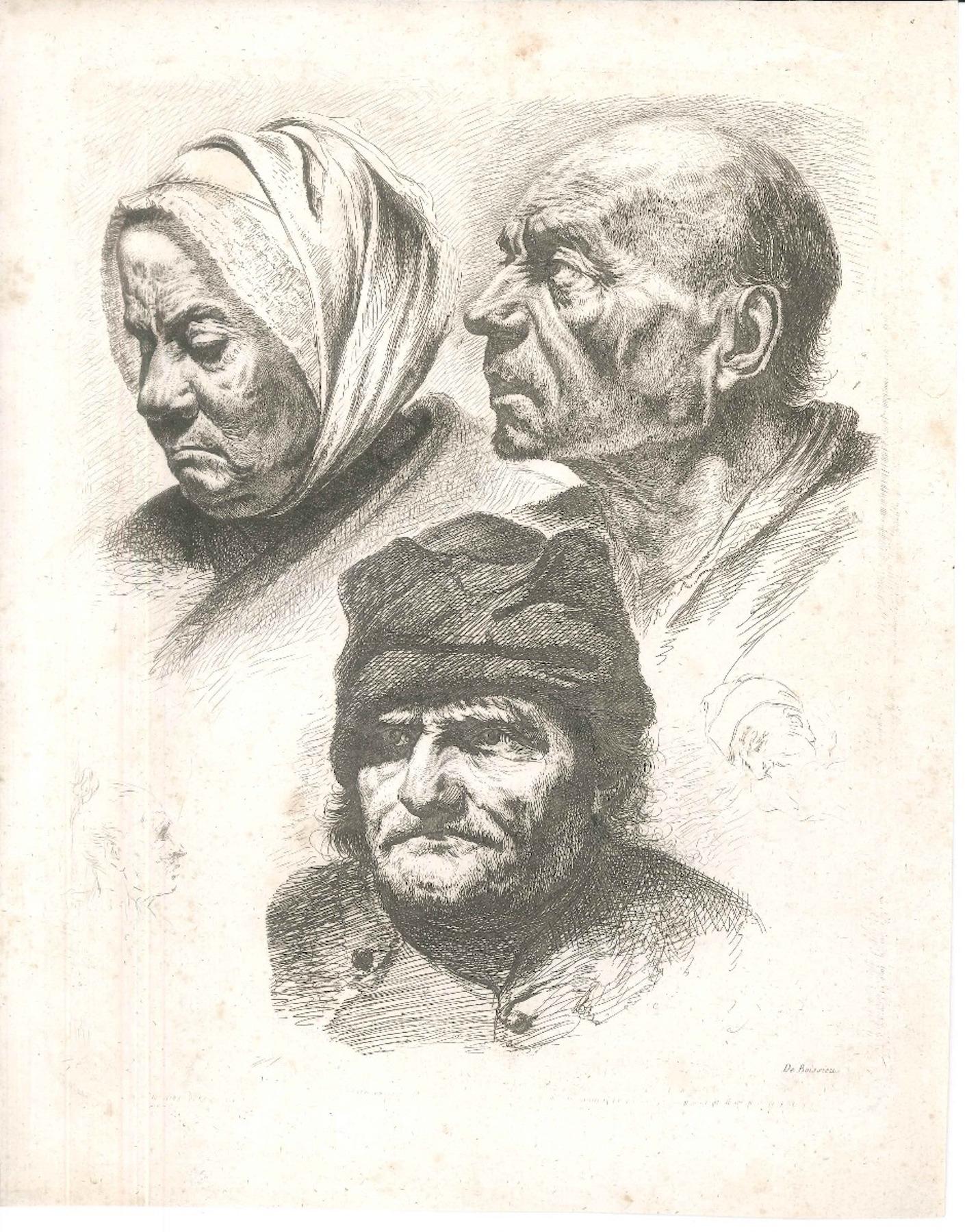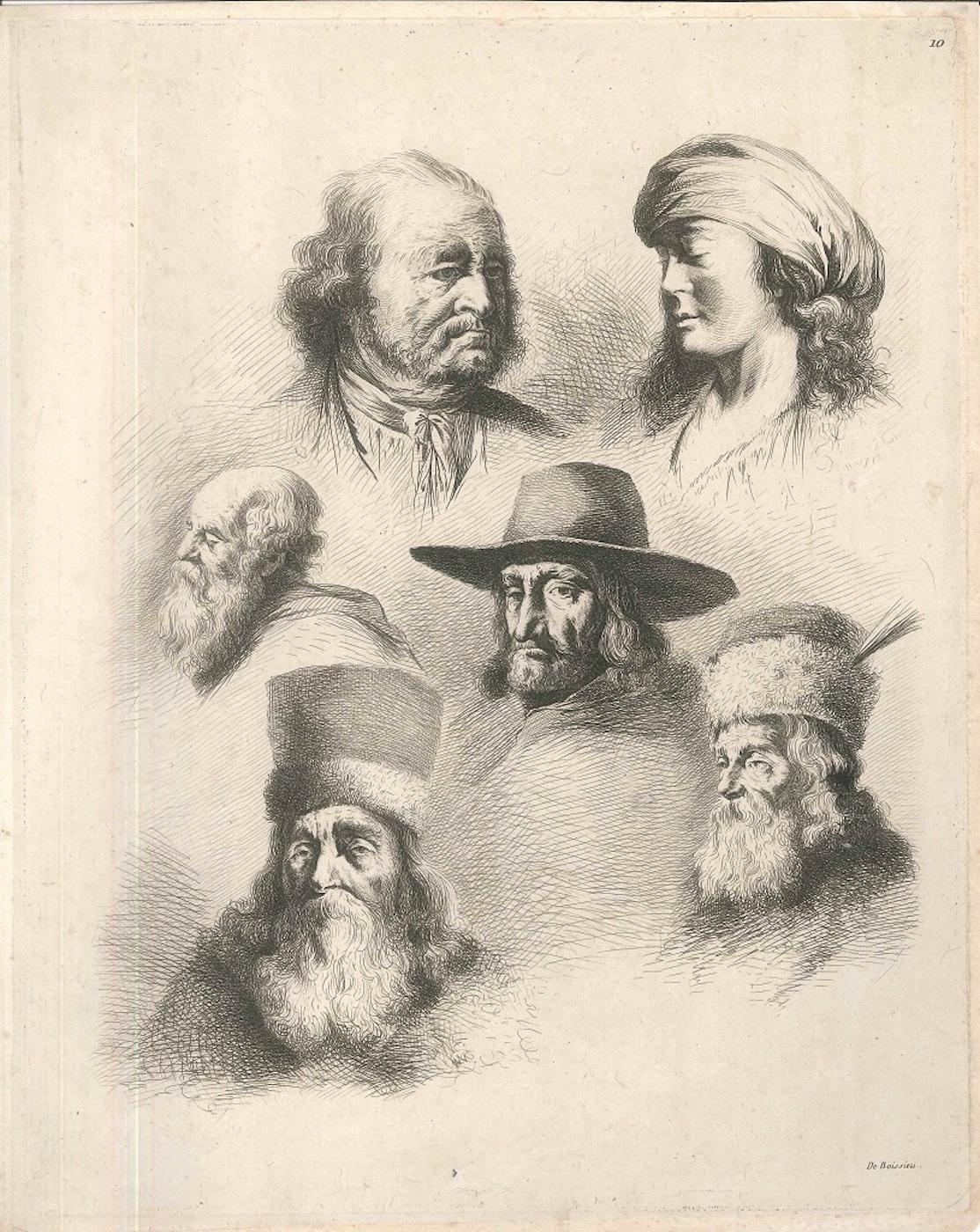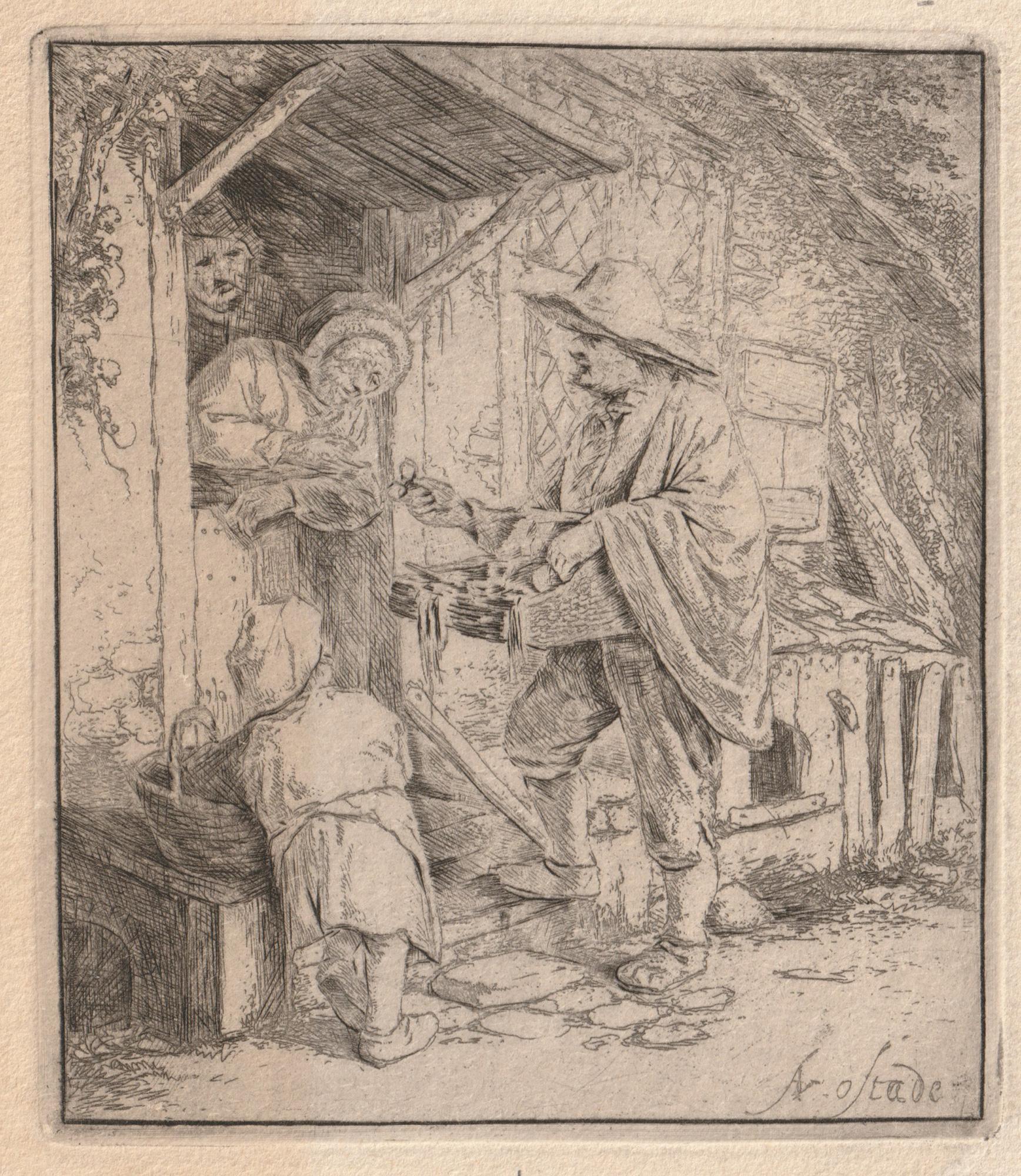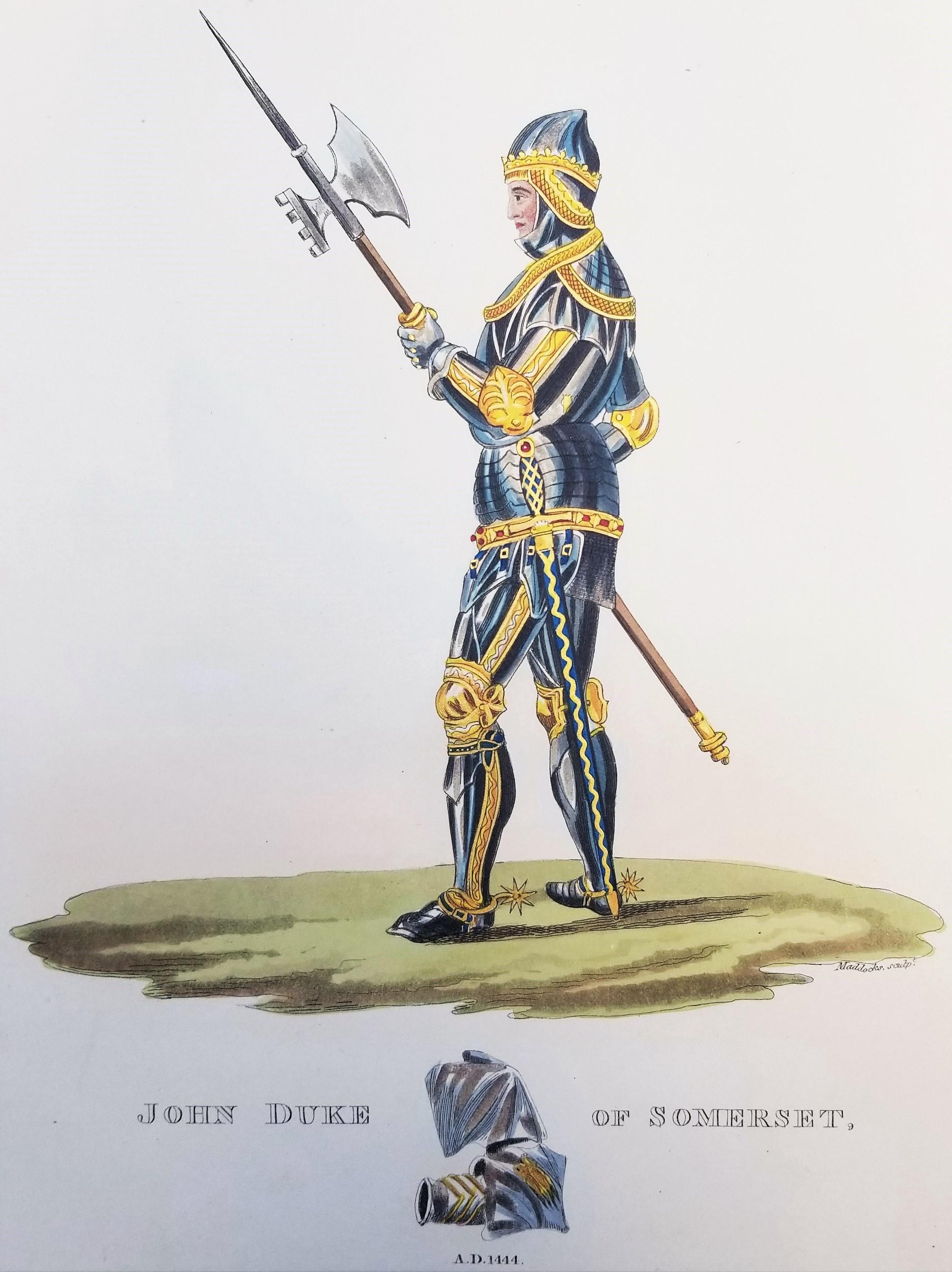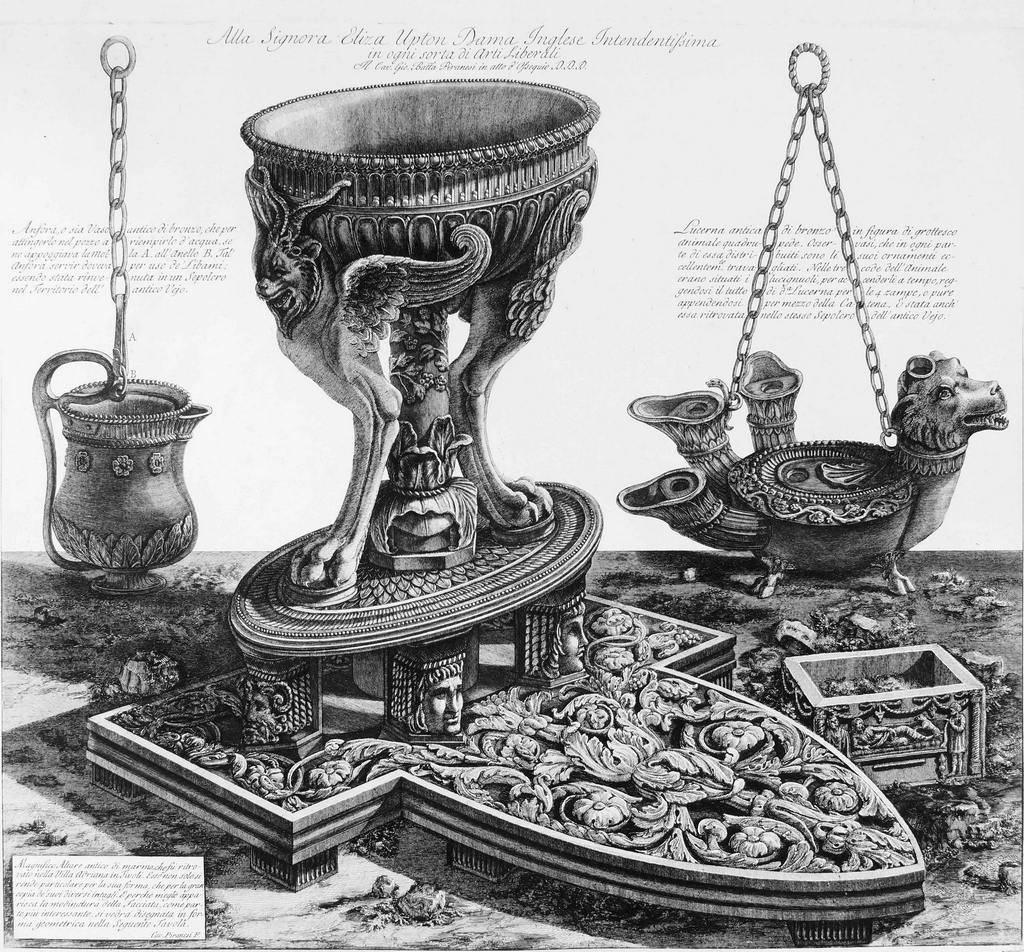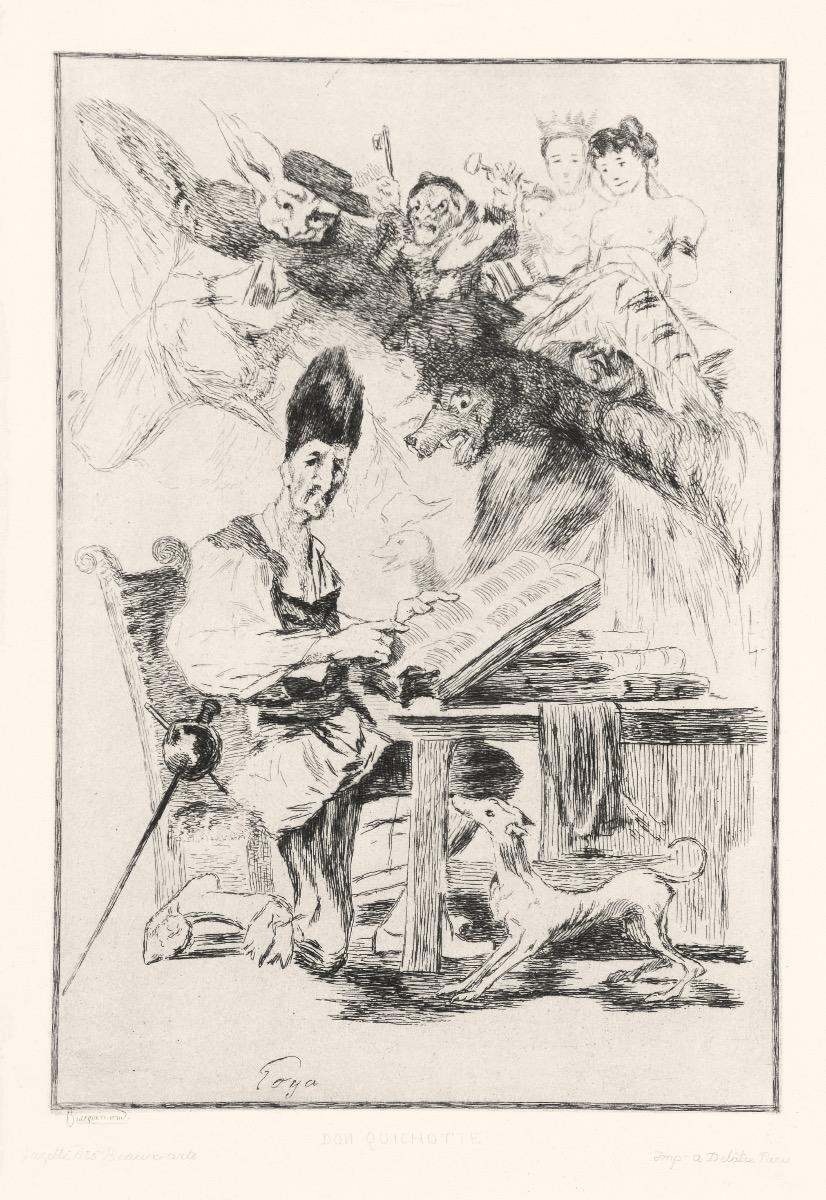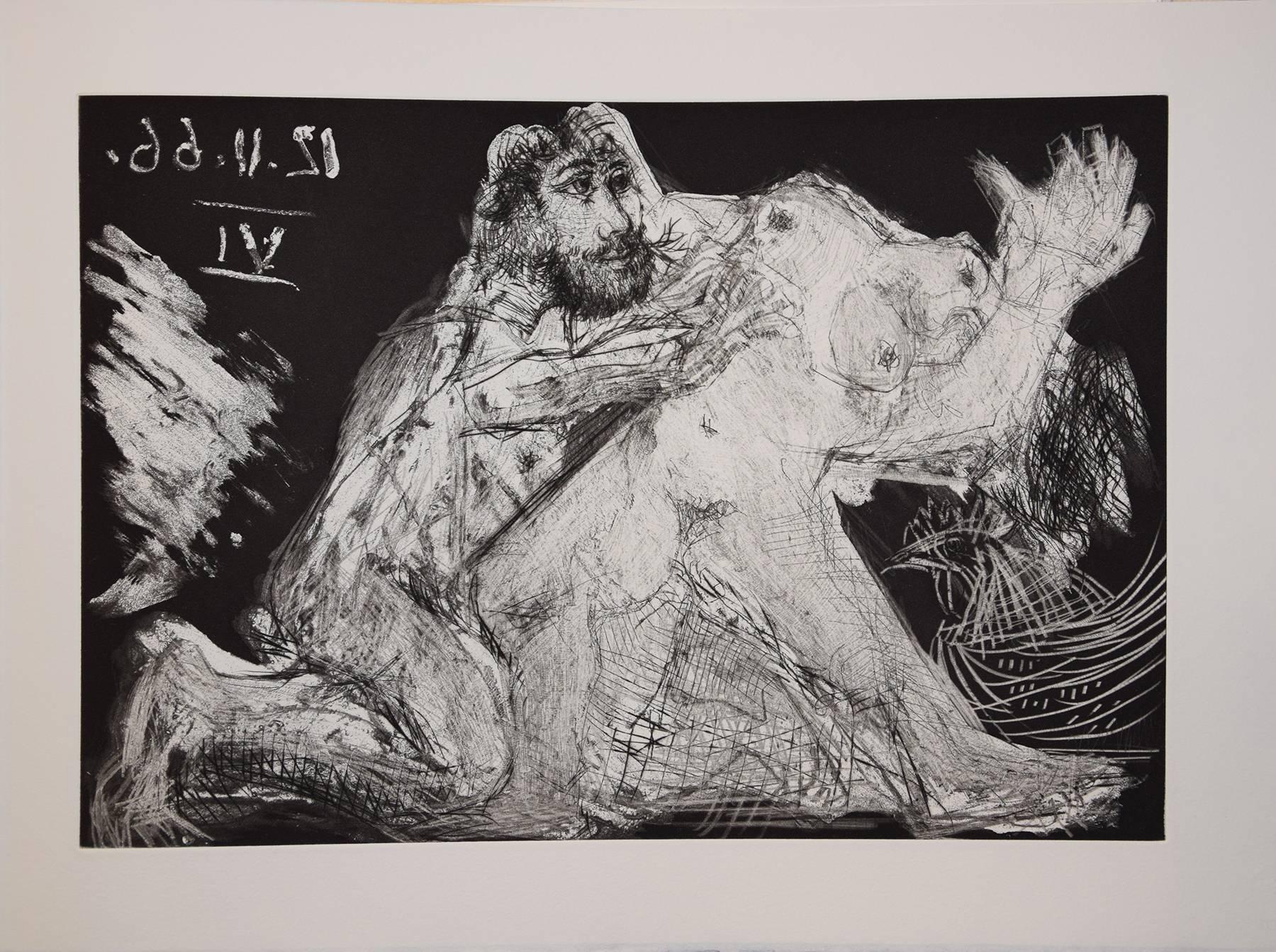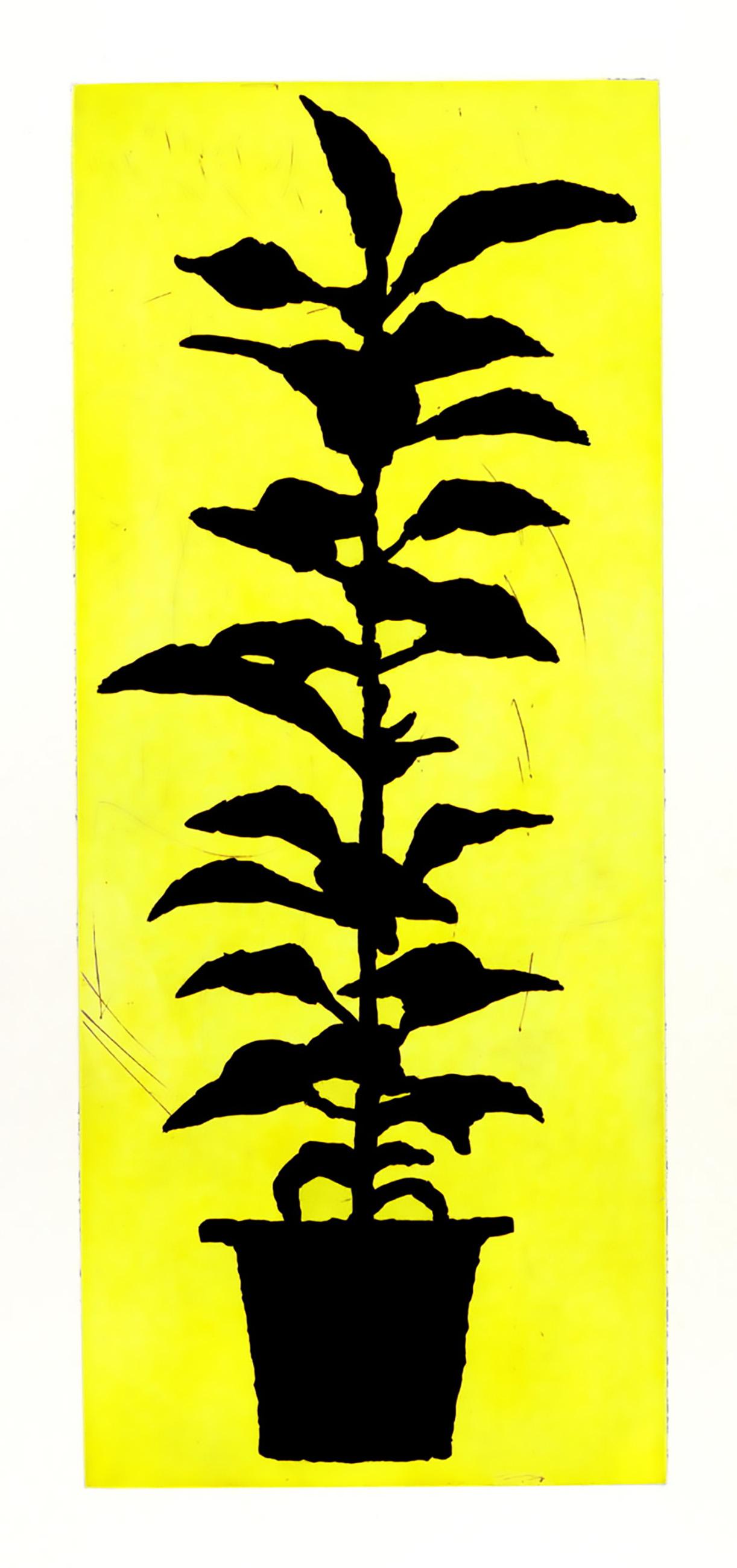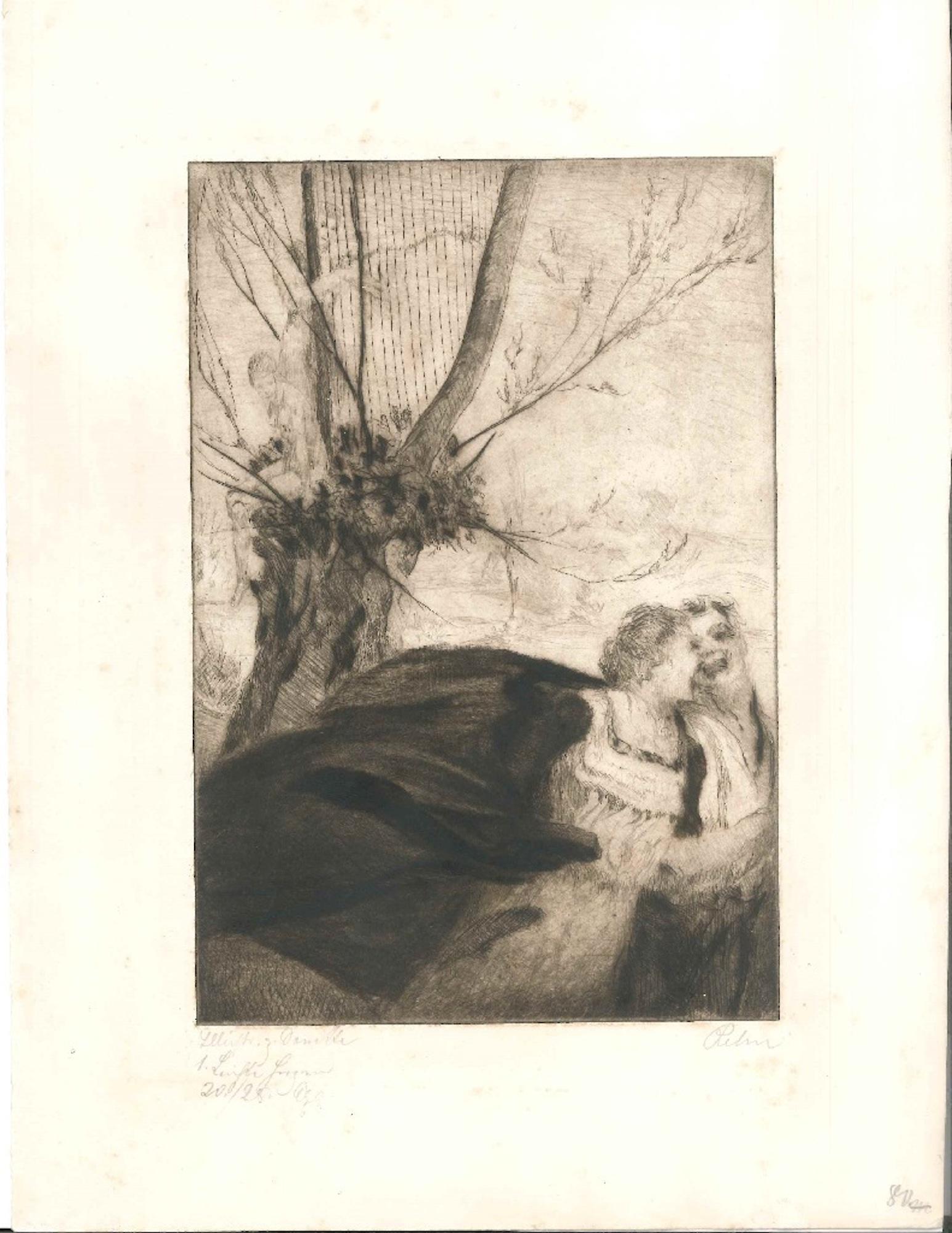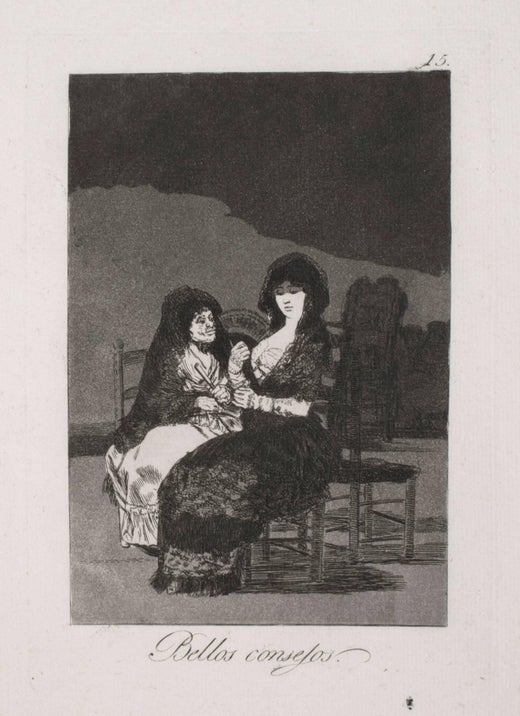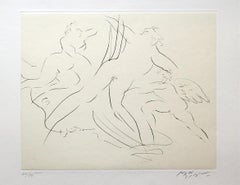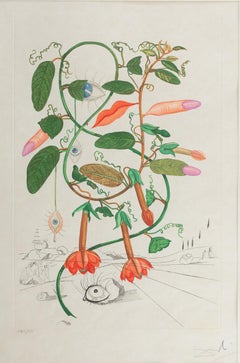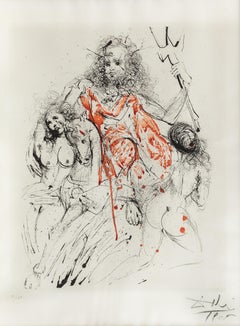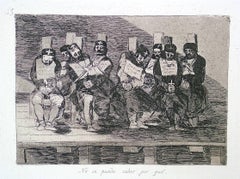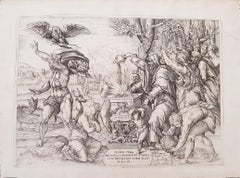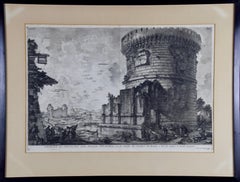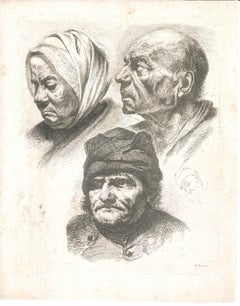Pesa Mas Que un Burro Muerto from Los Disparates
View Similar Items
Want more images or videos?
Request additional images or videos from the seller
1 of 6
Francisco GoyaPesa Mas Que un Burro Muerto from Los Disparatesof original 1824
of original 1824
About the Item
- Creator:Francisco Goya (1746 - 1928, Spanish)
- Creation Year:of original 1824
- Dimensions:Height: 27 in (68.58 cm)Width: 31.5 in (80.01 cm)
- Medium:
- Movement & Style:
- Period:
- Condition:
- Gallery Location:Long Island City, NY
- Reference Number:1stDibs: LU4661782963
Francisco Goya
Francisco José de Goya y Lucientes (1746-1828) was a Spanish romantic painter and printmaker. He is considered the most important Spanish artist of the late 18th and early 19th centuries. His works often contained a social message, like in his "Disasters of War" series. Immensely successful in his lifetime, Goya is often referred to as both the last of the Old Masters and the first of the moderns. He was also one of the great portraitists of his time.
About the Seller
4.9
Platinum Seller
Premium sellers with a 4.7+ rating and 24-hour response times
Established in 1979
1stDibs seller since 2014
3,006 sales on 1stDibs
Typical response time: 1 hour
Authenticity Guarantee
In the unlikely event there’s an issue with an item’s authenticity, contact us within 1 year for a full refund. DetailsMoney-Back Guarantee
If your item is not as described, is damaged in transit, or does not arrive, contact us within 7 days for a full refund. Details24-Hour Cancellation
You have a 24-hour grace period in which to reconsider your purchase, with no questions asked.Vetted Professional Sellers
Our world-class sellers must adhere to strict standards for service and quality, maintaining the integrity of our listings.Price-Match Guarantee
If you find that a seller listed the same item for a lower price elsewhere, we’ll match it.Trusted Global Delivery
Our best-in-class carrier network provides specialized shipping options worldwide, including custom delivery.More From This Seller
View AllMyths and Legends: Plate III, Voyage to Crete, Drypoint Etching by Reuben Nakian
By Reuben Nakian
Located in Long Island City, NY
Artist: Reuben Nakian, American (1897 - 1986)
Title: Myths and Legends: Plate III, Voyage to Crete (Black)
Year: 1979
Medium: Drypoint Etching with C...
Category
1970s Modern Figurative Prints
Materials
Drypoint, Etching
La Boullie (The Porridge), Old Masters Drypoint Etching by Jean Francois Millet
By Jean François Millet
Located in Long Island City, NY
Etching printed in brownish black on light tan Chine collé, 1861. Image measures 6 x 5 inches, displayed in a 15.5 x 12.5 inch frame. Etched signature and date lower left. A very goo...
Category
1860s Impressionist Figurative Prints
Materials
Drypoint, Etching, Intaglio
Cobea (Pisum Sensuale), Surrealist Drypoint Etching by Salvador Dali
By Salvador Dalí
Located in Long Island City, NY
This surreal botanical print by Salvador Dali is from a suite of 10 engravings called "Flora Dalinae". Growing from a vine are leaves shaped like lips an...
Category
1960s Surrealist Figurative Prints
Materials
Drypoint, Etching
Poseidon, Surrealist Drypoint Etching by Salvador Dali
By Salvador Dalí
Located in Long Island City, NY
Poseidon is one of 16 works in a suite by the artist called "The Mythology". The suite included works depicting other Greek/Roman gods such as Hypnos, Jupiter, and Athena, as well as lesser figures and concepts like the gorgon Medusa...
Category
1960s Surrealist Figurative Prints
Materials
Drypoint, Etching
La Grande Fortune, Old Masters Etching by Amand Durand after Albrecht Durer
By Charles Amand Durand
Located in Long Island City, NY
Artist: Charles Amand-Durand, French (1831 - 1905) after Albrecht Dürer, German (1471 - 1528)
Title: La Grande Fortune
Year: 1873 (original circa 1502)
Medium: Heliogravure on thin l...
Category
1870s Old Masters Figurative Prints
Materials
Engraving
Jesus Christ Expirant sur la Croix etching by Amand-Durand after Albrecht Durer
By Charles Amand Durand
Located in Long Island City, NY
Artist: Charles Amand-Durand, French (1831 - 1905) after Albrecht Dürer, German (1471 - 1528)
Title: Jesus Christ Expirant sur la Croix
Year: 1873
Medium: Heliogravure on wove paper
...
Category
1870s Old Masters Figurative Prints
Materials
Engraving
You May Also Like
One Can't Tell Why - Proof from the Disasters of War
By Francisco Goya
Located in New York, NY
Francisco José de Goya y Lucientes (1746 Fuendetodos – Bordeaux 1828), No se puede saber por qué – One can’t tell why ca. 1808–1814, etching, burnished aquatint, drypoint, an...
Category
1810s Old Masters Figurative Prints
Materials
Drypoint, Etching, Aquatint
The Sacrifice of Iphigenia
By Nicolas Beatrizet
Located in Roma, IT
Black and white etching and drypoint on wire rod paper, representing the myth of the sacrifice of Iphigenia. On the altar is inscribed "Iphigenia" in capital letters. On the lower left margin is inscribed "N. Beatrizet Lo Taringus F.", slightly discolored (Beatrizet usually signed his plates with the letters "N. B. L. F."). At the center of the lower margin is inscribed "Romae, Michaelis Tramezini formis cum privilegio summi Pont. M.D.L.III".
After a drawing attributed to either Michelangelo Buonarroti, Salviati, or Baccio Bandinelli...
Category
16th Century Old Masters Figurative Prints
Materials
Drypoint, Etching
Ancient Roman Architecture: Original Framed 18th C. Etching by G. Piranesi
By Giovanni Battista Piranesi
Located in Alamo, CA
"Veduta del Sepolcro della Famiglia Plauzia per la Strada Che Conduce da Roma a Tivoli vicino a Ponte Lugano" from "Le Antichità Romane" (Roman Antiquities), one of the most famous works by Piranesi. "Antichita" illustrates the tombs along the Appian Way...
Category
Early 18th Century Old Masters Figurative Prints
Materials
Etching, Engraving, Drypoint
Study of Five Heads - Original Etching by J.-J. Boissieu
By Jean-Jacques de Boissieu
Located in Roma, IT
Study of Five Heads is a beautiful black and white etching with drypoint interventions on paper, realized at the end of XVIII century by the French artist Jean-Jacques de Boissieu (Lyon, 1736- 1810).
Five study of heads of which two profiles (a female and a male) are lightly sketched with the drypoint technique, and we could appreciate the incredible draftsmanship. Instead, the bigger three portraits are very detailed and etched with a superb technique. Although the subjects are drawn in different scales and with different degrees of finish, each portrait has the dignity of a unique piece and the composition is very balanced.
In particular on the lower margin at the center there is the portrait of "Le Père Cotrot, Garçon Teinturier à Lyon'", an elderly man, toothless and with a large-nosed, slightly turned to left, with a hat and unbuttoned jacket over waistcoat, shows all his wrinkles in a very realistic way.
Signed on plate on lower right margin “De Boissieu”.
This old master’s original print with fresh impressions, is in very good conditions, except for a usual yellowing of the paper above all on the edges and some signs of the time and light foxing along the margins, do not affect the image.
Jean-Jacques de Boissieu (Lyon,1736 –1810)
Jean-Jacques de Boissieu was a French artist studied at the École de Dessin in Lyon, but he was mostly self-taught.
His first prints were realized between 1758–64. When he went to Italy in the retinue of the ambassador and Duc de la Rochefoucauld d’Enville, he had the lifechanging encounter: he met Voltaire and he entered in the world of luminaries, he had the opportunity of realizing some plates for the Diderot-d’Alembert’s Encyclopèdie. Then he continued to produce prints in Lyon, Boissieu made many etchings of the Roman and Dutch countryside, as well as the French countryside around Lyon, which earned him a reputation as the last representative of the older etching...
Category
Late 18th Century Old Masters Animal Prints
Materials
Drypoint, Etching
Study of Six Heads - Etching by J.-J. Boissieu
By Jean-Jacques de Boissieu
Located in Roma, IT
Study of Six Heads is a beautiful black and white etching with drypoint interventions on paper, realized at the end of XVIII century by the French artist Jean-Jacques de Boissieu (Lyon, 1736- 1810).
Six study od heads ( four elder men, a middle-aged man at the center, and a woman with turbant) etched with a superb technique and an incredible draftsmanship are drawn to different scales and with different degrees of finish, have the dignity of six different portraits with the same passion and effort.
Signed on plate on lower right margin “De Boissieu”. Inscription ( number plate) on higher-right corner "10".
This old master’s original print with lifetime impressions, is in very good conditions, except for a usual yellowing of the paper above all on the edges and some signs of the time,do not affect the image.
Jean-Jacques de Boissieu (Lyon,1736 –1810)
Jean-Jacques de Boissieu was a French artist studied at the École de Dessin in Lyon, but he was mostly self-taught.
His first prints were realized between 1758–64. When he went to Italy in the retinue of the ambassador and Duc de la Rochefoucauld d’Enville, he had the lifechanging encounter: he met Voltaire and he entered in the world of luminaries, he had the opportunity of realizing some plates for the Diderot-d’Alembert’s Encyclopèdie. Then he continued to produce prints in Lyon, Boissieu made many etchings of the Roman and Dutch countryside, as well as the French countryside around Lyon, which earned him a reputation as the last representative of the older etching...
Category
Late 18th Century Old Masters Animal Prints
Materials
Drypoint, Etching
The Spectacle Seller
By Adriaen Jansz van Ostade
Located in Middletown, NY
Etching and drypoint on cream laid paper, 4 x 3 3/8 inches (102 x 86 mm), 1/4 inch margins. Signed in the plate, lower left corner. The 3rd state (of 6), after the rounding of the pl...
Category
Mid-17th Century Old Masters Figurative Prints
Materials
Laid Paper, Drypoint, Etching
Recently Viewed
View AllRead More
Romare Bearden’s Humanity Infuses His Bright, Bold Art
Through collage, painting and printmaking, the artist foregrounded Black life in America in revolutionary new ways.
Chryssa’s 1962 Neon Sculpture Was Way ahead of the Art-World Curve
By working with lettering, neon and Pop imagery, Chryssa pioneered several postmodern themes at a time when most male artists detested commercial mediums.
